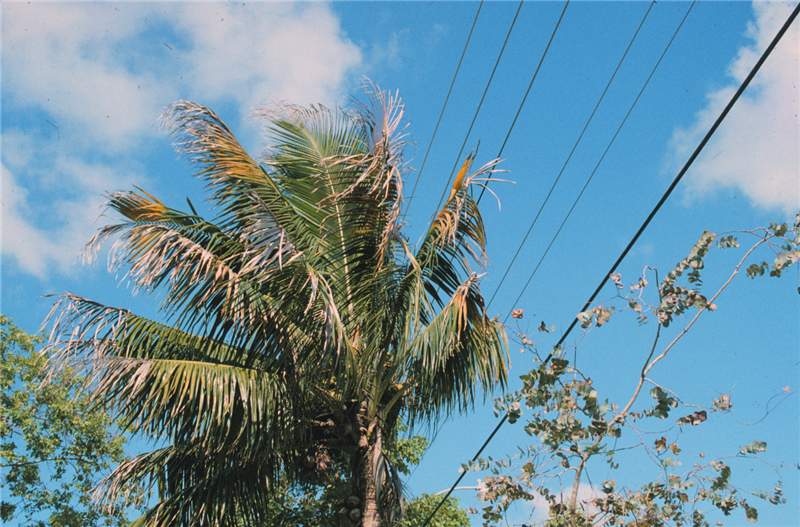Powerline Decline
|
Figure 1. Powerline decline of Cocos nucifera. Note chlorotic and necrotic leaf tips. Photo by T.K. Broschat
|
|
Figure 2. Powerline decline on Syagrus romanzoffiana showing chlorotic and necrotic leaf tips. Photo by T.K. Broschat
|
Symptoms
Leaves near high voltage overhead power lines often exhibit chloroticchlorotic:
see chlorosis
or necroticnecrotic:
see necrosis
tips (Figs. 1 and 2). In severe cases, the entire crowncrown:
see canopy
may become chloroticchlorotic:
see chlorosis
with necroticnecrotic:
see necrosis
leaf tips. Necroticnecrotic:
see necrosis
tips of leaves may hang down. Palm death is relatively rare, however.
Cause
Electromagnetic fields within 2 to 5 feet of a high voltage power line appear to cause injury to palm foliage. Leaves do not need to physically contact the wires for injury to occur; injury often occurs on the side of the palm opposite the wires as well as those nearest to the lines.
Occurrence
Powerline decline is common wherever palms are planted under overhead power lines. Most species appear to be susceptible.
Additional comments
Visual symptoms on palms near overhead power lines is usually sufficient to diagnose this disorder.




